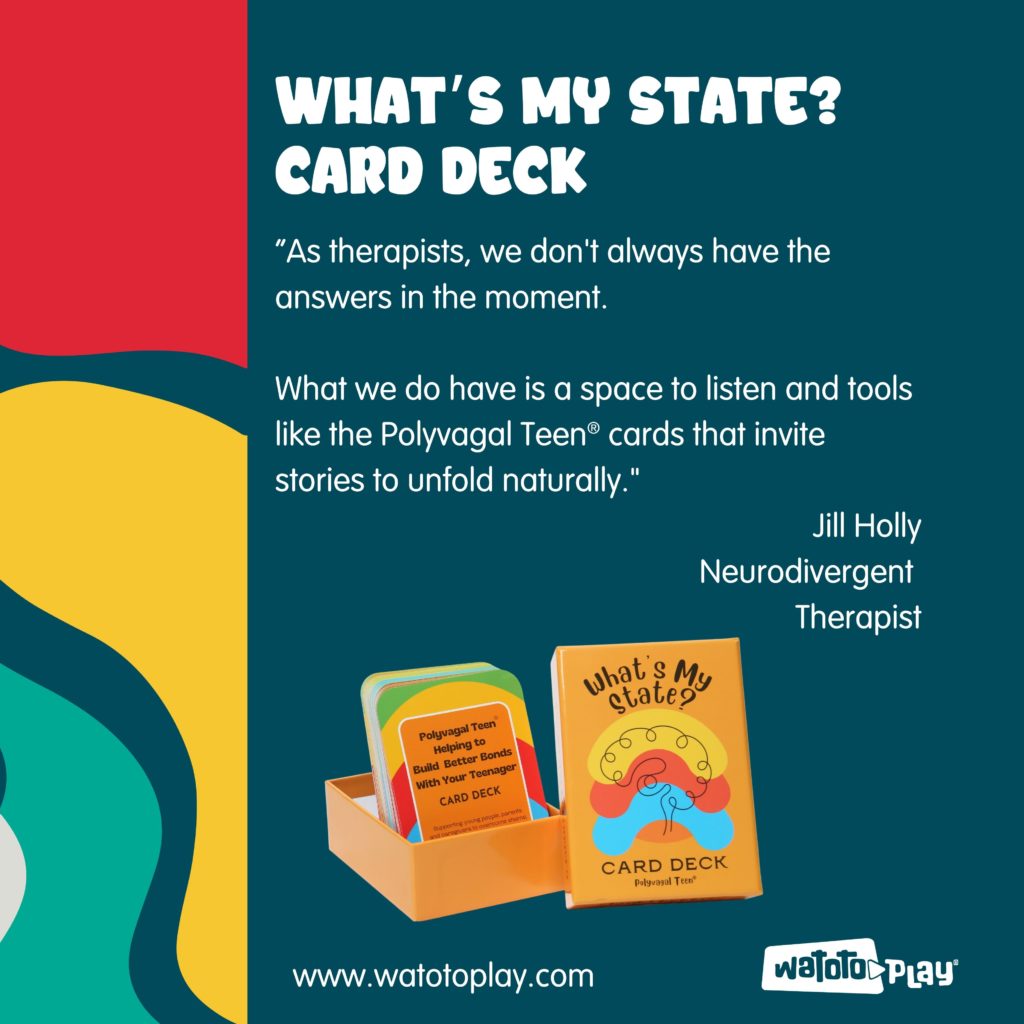
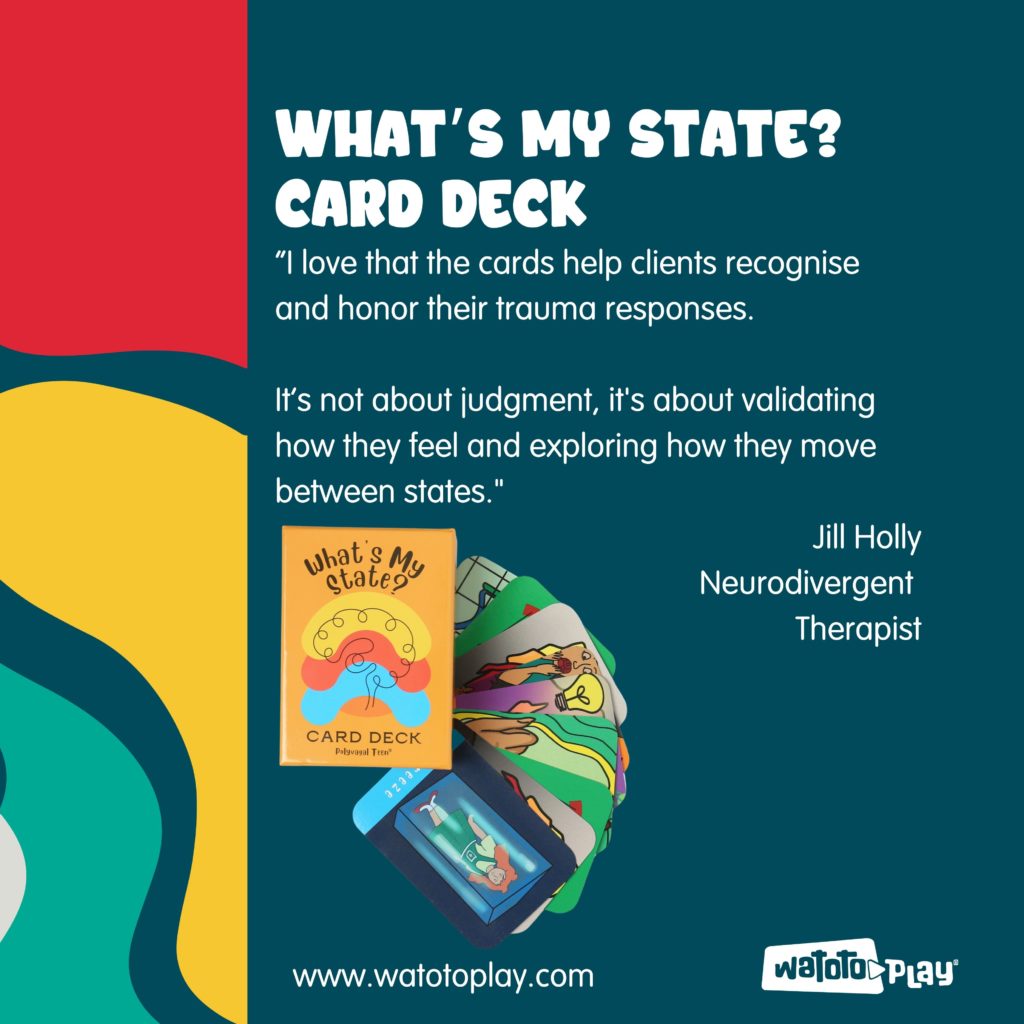
Yasmin: If you just tell the audience who you are and what you do, and I believe you’ve got a set of the Polyvagal Teen cards. Fantastic. And we’re going to have a quick chat about those and how you use them.
Jill: So my name is Jill Holly, and I’m a counsellor psychotherapist working in the UK, predominantly with adults and parents. I am autistic and ADHD, and it’s just sort of happened that all my clients now are ADHD and autistic. So it’s not something I’ve actively gone out and done, but that’s how it’s ended up, and it has ended up being a sort of niche for me, but definitely with the interplay of trauma, which is what brought me to buying your cards.
Jill: I like visual ways of being able to talk about trauma rather than just talking about it in our heads. So they’re pretty new to me. What I do is I put them into the different piles of trauma states. And so if I show you, for example, like this is the rage card, and it has the descriptions on the back of things that they notice in the body. So that’s really good for clients with different or difficult interoception. So if it’s difficult to understand what’s going on in the body, these are really good prompts.
Yasmin :And also, I just want to say it’s only a conversation starter, isn’t it? Because they may have different symptoms, but it’s just acknowledging.
Jill: Yes. And it can really introduce the fact that some clients may struggle to recognize emotions or feelings and find it difficult to do the word. So actually by having the descriptions and having the pictures, it’s a way of being able to go quite deep into exploring what that means for the client.
Jill: So the way I use it is if they present something that I think is connected to a trauma state, I will go through and get three cards out. I’ll put the pile into three packs, and I will pick something for the vagus nerve in the middle. Then I will get something for the parasympathetic range, and then I get another card for the dorsal vagal phase.
Yasmin: So if I let you know, share with you how I’ve color-coded them. I’m only looking at three states, physiological states of the autonomic nervous system. I know there are more, like mixed states, but at this stage, I feel that’s enough, that that’s what we need to know. So the three broad categories are immobilised, and I always try to remember immobilised by saying not moving.
Jill: So low energy.
Yasmin: Yes. And they’re the blue cards. Then the red cards are the mobilised, high energy. And then the yellow cards are those in the relaxed state. So the nervous system is giving us permission to connect. So what you’re saying is you split those into three piles?
Jill: Yes. And when we’ve got a card from each state that they have chosen, I work quite creatively. So depending on how much time we have or where we are in the session, I will just give them the whole pack to choose from, or I will have already split them and they pick one from each. And what we explore is what takes us up and down to one, how we get stuck.
Jill: So it’s that visual representation of where they are at. And then we build a story. So I actually use them to then build a story. So if they’re telling me a story of being somewhere and having gotten triggered, noticing that they’ve gone into an immobile or mobile state, what we do is actually use the cards to tell the story and then go back to the pack of the cards to be able to see how that could have looked different.
Jill: And by noticing the difference, again, working very visually, by noticing, “Well, that’s where you are, what would have taken you there?” we can really honor and validate the things that triggered them. So we’re not saying it’s bad, we’re absolutely validating what happened while also exploring what would move them to the other state.
Jill: But it also is a really good conversation for me to be able to explain how moving to those states is acceptable. We are meant to move to those states. It’s how often and what’s moving us and how long we stay there that can show us maybe some patterns. So yeah, it gives us a stage and a visual, which is what I like working with.
Yasmin: When you say the storytelling, I don’t know if you’ve managed to do this yet, but because there are two identical cards of the same image, sometimes I split those up. And so we tell the storytelling from their perspective, but then they can also add, like if there’s a second or third person involved, that person’s responses.
Jill: Yes.
Yasmin: So you’re building that story.
Jill: Yeah. And I think that I hadn’t thought of that. So that’s good. And I think that by working creatively, you said it a bit earlier, it enables the client to go where they need to go. I’m starting, I’m explaining many possibilities of what the cards can do, but actually, I work quite intuitively and I make things up as to how to use them based on what the client presents.
Jill: So it’s that starting point, and again, the visual and it being creative. I know, as you do, being part of the creative counsellors, that it’s a bridge to what needs to come up. So we’re not pulling it out, it’s just from the cards. If there is something in them that wants to come up and be shown, the cards give that opportunity for it to latch onto.
Jill: Can I just say they’re beautiful? I’m really fussy and awkward with visuals. I’m quite picky, and that’s not necessarily a good thing, but I just love these. You’ve got so many different representations. And they’re shiny, they feel good. My inner child comes out. They’re pretty to hold, and it’s a nice box, a really solid box. These things matter.
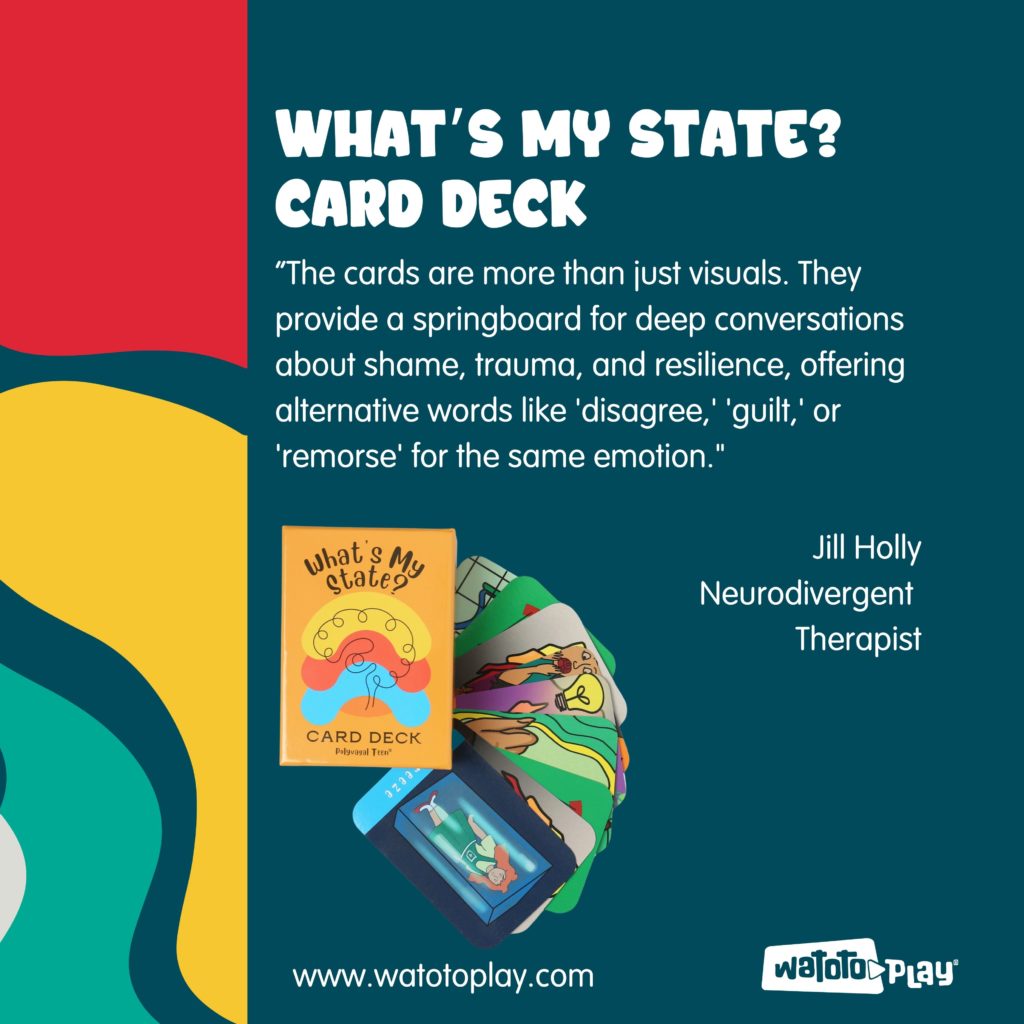
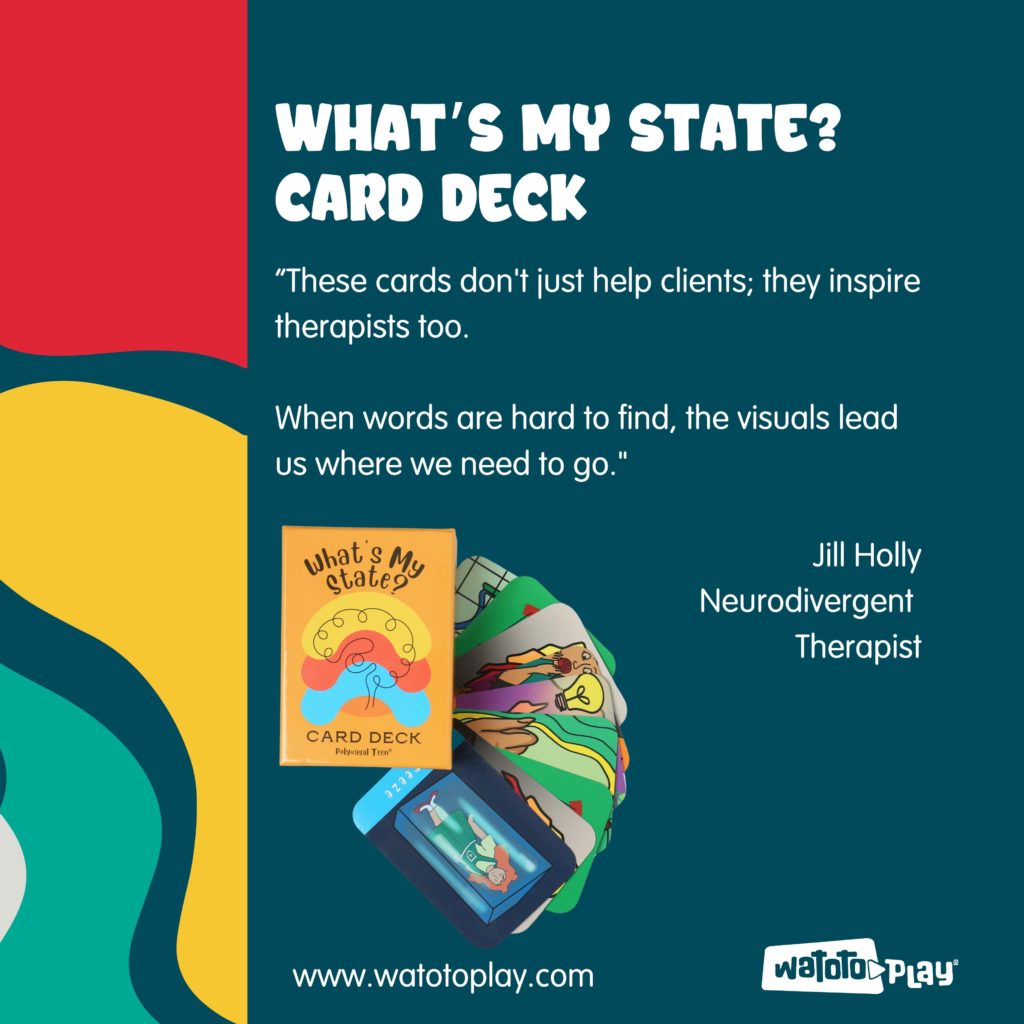
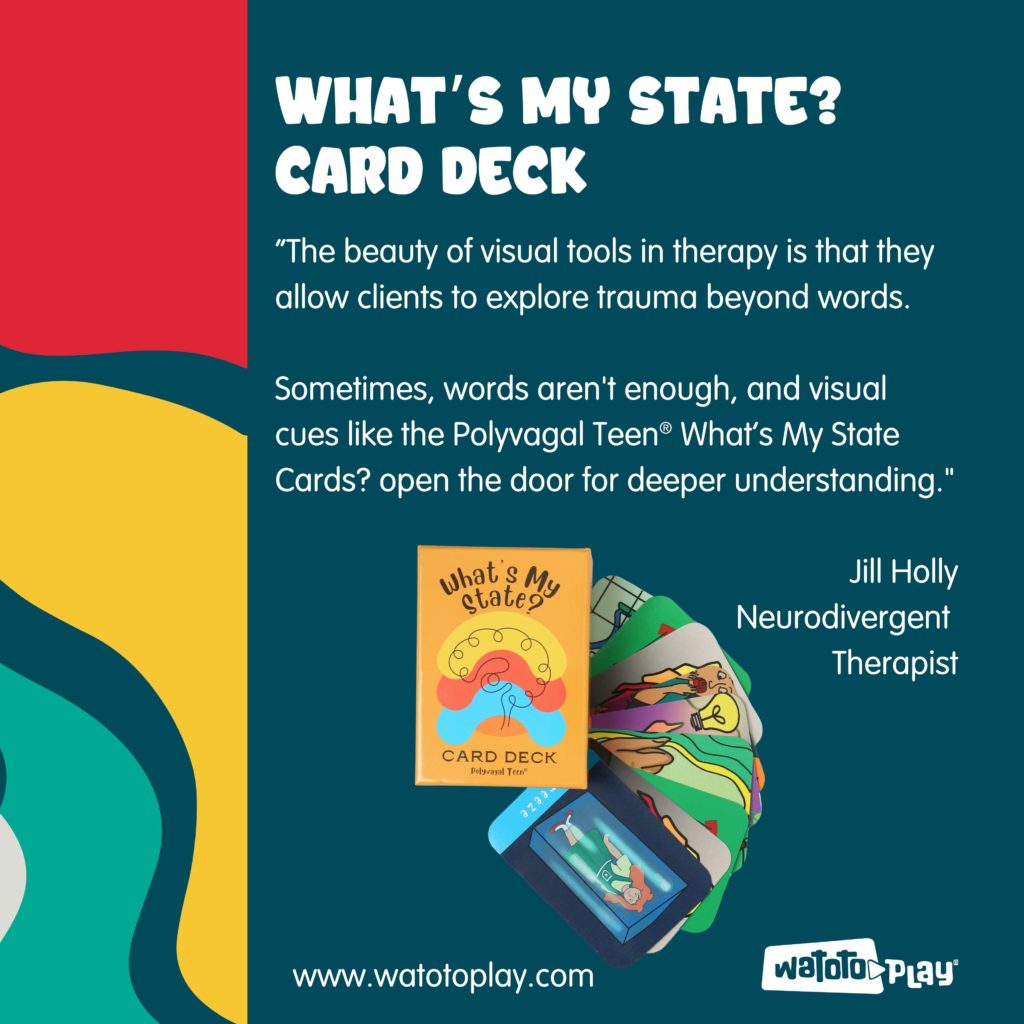
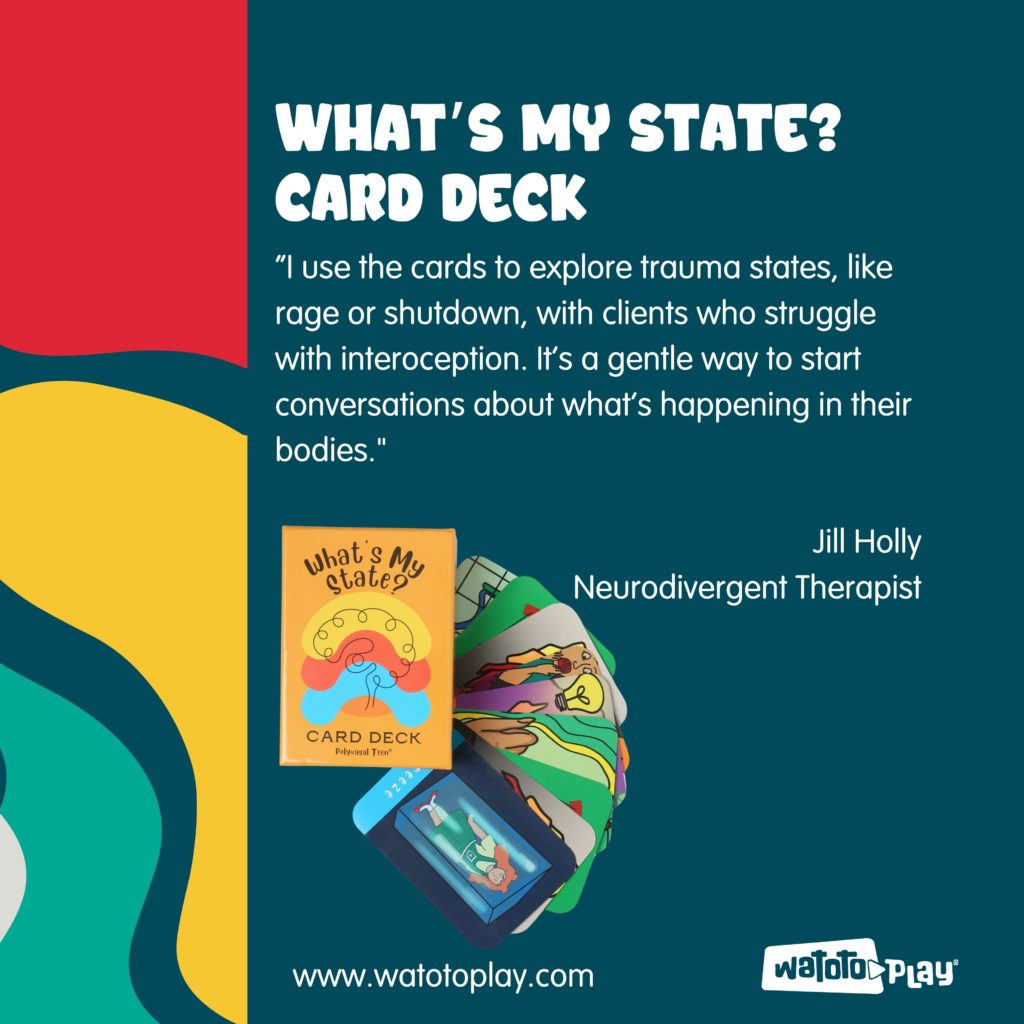

Driven to improve the emotional wellbeing of young people, adults, and parents, Yasmin Shaheen-Zaffar is the founder and creator of Polyvagal Teen®. She also developed The R.U.D Process® – a practical, step-by-step approach that helps teens and adults recognise and manage stress and anxiety by becoming Polyvagal Aware.
In addition, Yasmin leads several social-impact initiatives that promote steady, consent-based communication and co-regulation:
Glad We Talked® programmes
Neurosloth® Academy
Talky Talk Cards
Scribbledeedo®
World Stop Shouting Day – a campaign to reduce conflict and aggression in everyday interactions
Alongside this work, Yasmin runs a small private counselling practice in North Yorkshire and online, specialising in emotional regulation and working with neurodivergent, multi-faith, and mixed-heritage clients.